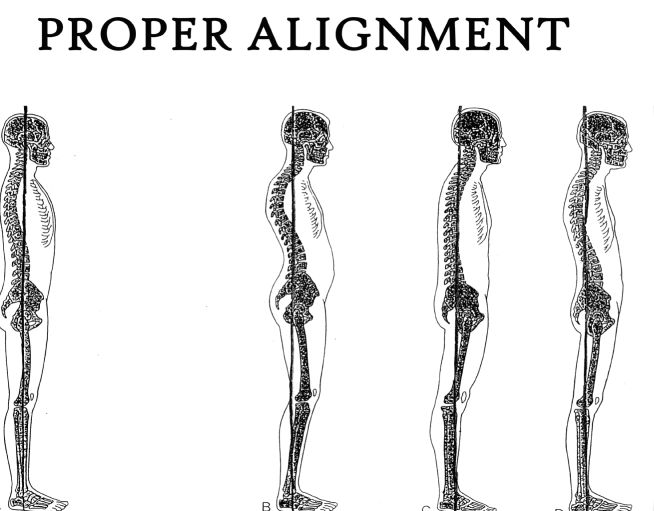Health & Fitness
Is School Affecting Our Children’s Posture?
By Cheryl Alker
Whether you have children or not, you cannot have failed to have noticed that it’s back to school time. Television and newspaper advertisements are literally bombarding us with savings that are available on clothing, shoes, backpacks, school supplies and electronics.
Once that first school bell rings your child will be kitted out from head to toe in everything he/she needs for the year ahead and school life will become a dominant factor in their everyday lives. While there is no doubt that school and an education are absolute necessities in our children’s development, have you ever taken a moment to notice the affect it may be having on your child’s posture?
If you work, or have ever worked in an office, you will be aware of ergonomics (the applied science of equipment design intended to maximize productivity by reducing operator fatigue and discomfort) and how it is vitally important to your overall wellbeing to be set up in correct posture if you sit for long periods of time. So what about our children’s school desk and chair? Below will explain why, as parents, we should we be taking some sort of precautionary measure to preserve our children’s posture.
Did you know that poor posture in our children, and particularly during the teenage years, causes muscle strain or over time abnormal bone growth? Poor posture can also make your child appear less confident. In fact, back pain is one of the most common complaints in teenagers and adults alike. Most experience a bout of back pain at some point in their lives and for some, back pain can be a continual source of aggravation and discomfort.
One of the most common causes of back pain is poor posture. Posture can be defined as the way in which you hold yourself. Good posture ensures that all of your bones and joints are aligned properly which prevents excessive strain on the muscles and promotes a full range of movement at the joints. Unfortunately our children are spending more and more time sitting, in fact research shows that young people spend more time than ever at a desk, in front of a computer, on their telephone, tablets, playing video games or just watching television. This in turn is contributing to an increase in the prevalence of back pain amongst the younger generation.
Poor posture is definitely more associated with people with a sedentary lifestyle as people tend to slouch or slump whilst sitting. Now you may not necessarily associate the word “sedentary” with your child, after all I am sure many of you who are reading this article have children involved in one sport or another but if we are honest, those activities are usually after school or at the weekends. Just take a moment to analyze the percentage of the day that your child is actually seated. They spend 7 to 8 hours at school, obviously sitting for the majority of that time, they come home and may watch television for a little, sitting, they will no doubt sit to catch up with social media, and then they start their homework, sitting, at some point they will eat, sitting……….. You get the picture?
Sitting for hours each day will eventually force the body out of alignment, leading to lower and upper back problems, lack of energy, a collapsed ribcage, loss of waistline, loss of abdominal support, shoulders rolling forward and the head sitting will eventually be forced into an incorrect position which could lead to TMJ dysfunction.
The first diagram is how we should look for correct postural alignment, take a look at your child and see which category they might fall into.
So what can you do to ensure your child does move into their teenage/adult years in good postural alignment and without back pain?
Encourage good habits from an early age – most of us remember being told to ‘sit up straight’ and ‘stop slouching’ by our parents and although it may have seemed annoying at the time, teaching good habits from an early age is really important.
Show them how to set up a chair correctly – your child’s feet should touch the ground and their head should not be tilting up or down to look at a screen, they should be looking at eye-level and have the appropriate size keyboard and mouse if possible.
Invest in a good chair for the home – if your son or daughter spends a lot of time sitting at a desk for work or study purposes or because they enjoy playing computer games or using the Internet, investing in a good chair will make a massive difference. A good chair should have a high back to support the entire length of the back and additional lumbar support for the lower back (this is usually built-in). It is also helpful to have adjustable height and arms, as this enables you to sit in a comfortable position when typing or playing a game.
Encourage exercise – When muscles are short and tight they draw bones closer together, resulting in poor posture and poor mobility at the joint. Encourage your child to stretch regularly, strengthen the muscles that retract and adduct the shoulder girdle and improve core strength.
Warning – Some cases of poor posture can indicate a teenager is experiencing scoliosis (an abnormal curving of the spine). Scoliosis may not appear until your child reaches adolescent growth spurt in teenage years. Early diagnosis can mean earlier treatment intervention, which can prevent the curve from developing more severely. If your child complains of back pain, has trouble breathing, the spine appears visibly curved, then it would be worth a visit to your physician.
***
Cheryl Alker specializes in flexibility training, facial exercises and postural alignment. Her 30 year career started as a group fitness and personal trainer, she has lectured and directed fitness training programs in both Europe and the USA and was an advisor for a Governmental health promotion program. Alker and her company Stretch Results International continues to work with a select clientele from a base in Palm Beach County, Florida, certifying health professionals in her results based stretching program, educating consumers through public speaking and offering consultation to clients who wish to lose their muscular pain and gain flexibility to achieve full and active lifestyles. Alker has a proven totally natural program that alleviates back pain visit www.secretbackpaincure.com. For more information about professional continuing education and consultation options, e:books or DVD’s please call Cheryl on 561 889 3738 or visit www.stretchresults.com.


